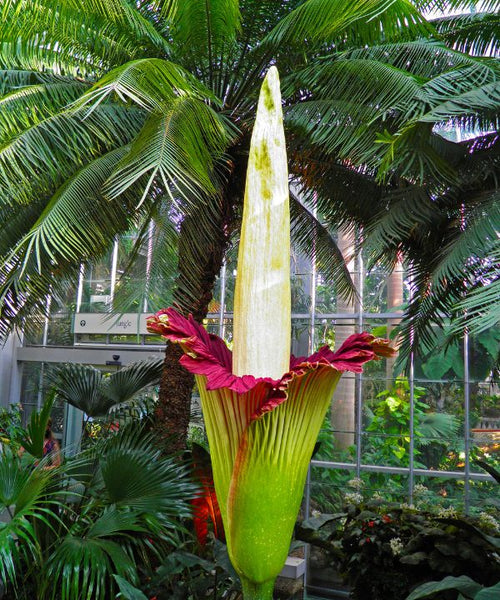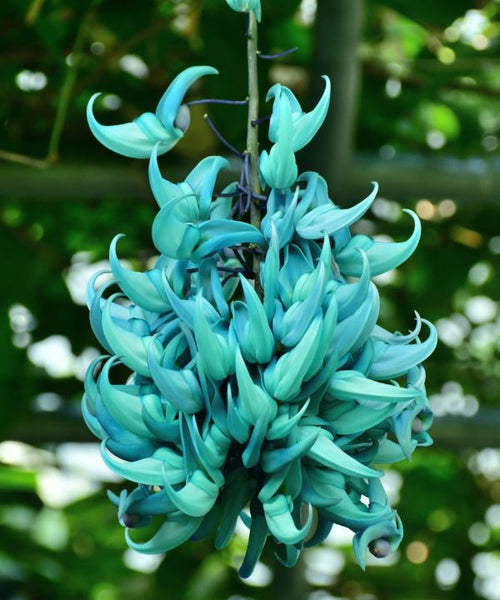
The World's Rarest Blooming Flowers
The world of flora is vast and diverse, offering a mesmerizing array of colors, shapes, and scents. Among these, some flowers stand out not just for their stunning beauty or unique characteristics but for their incredibly rare occurrences. These botanical treasures, often hidden away in remote corners of the world or blooming under the most stringent conditions, are the jewels of the plant kingdom.

The Corpse Flower (Amorphophallus titanum)
The Corpse Flower, known scientifically as Amorphophallus titanum, leads the parade of rarities. Native to the rainforests of Sumatra, Indonesia, this flower is not only rare but also one of the largest flowers in the world, capable of reaching over 10 feet in height. Its name derives from the strong odor it emits during its infrequent blooming period – a smell akin to that of rotting flesh. This scent serves to attract pollinators, such as carrion beetles and flesh flies. The Corpse Flower blooms once every 7 to 10 years, making its occurrence a spectacle that draws crowds from around the globe.

Image via www.goorchids.northamericanorchidcenter.org
The Ghost Orchid (Dendrophylax lindenii)
Another entrant in our list of botanical rarities is the Ghost Orchid. This ethereal flower is most famously found in the swamps of Florida and Cuba. Its name comes from its striking appearance: the pale, almost translucent flowers seem to float in the air, thanks to their lack of leaves and the thin, wiry roots that attach to the bark of trees. Blooming only under very specific conditions during the summer months, the Ghost Orchid is a challenge for even the most dedicated orchid hunters to find, adding to its mystique and allure.

Jade Vine (Strongylodon macrobotrys)
The Jade Vine, native to the tropical forests of the Philippines, is a stunning example of nature's artistry. Its claw-shaped flowers display an almost surreal shade of blue-green, a color rarely seen in the plant world. The blooms of the Jade Vine can reach up to 3 meters in length, hanging in breathtaking, waterfall-like clusters. Pollinated by bats, this flower's unique coloration and form are adaptations to attract its nocturnal visitors. Unfortunately, deforestation and habitat destruction have made the Jade Vine increasingly rare in the wild, adding an element of urgency to its conservation.

Middlemist Red (Camellia)
The Middlemist Red camellia is possibly the rarest flower in the world, with only two known specimens existing in cultivation today: one in New Zealand and another in the UK, at Chiswick House's conservatory. Originally from China, the Middlemist Red was brought to Britain in the early 19th century by John Middlemist, a nurseryman. The flower's deep pink blooms are a sight to behold, yet its scarcity reminds us of the fragility of botanical heritage and the importance of conservation efforts.

The Chocolate Cosmos (Cosmos atrosanguineus)
The Chocolate Cosmos is as tantalizing as it sounds, emitting a rich aroma reminiscent of chocolate. Native to Mexico, this dark, burgundy flower is now considered extinct in the wild and survives only through cultivation. The flower's scent is most potent in the evening, designed to attract pollinators. Its rarity and chocolate-like fragrance make it a sought-after specimen for gardens and collections around the globe, yet its survival hangs in a delicate balance, dependent on human care and propagation.

Parrot's Beak (Lotus berthelotii)
The Parrot's Beak, with its striking curved petals, resembles a parrot's beak (duh!). Originating from the Canary Islands, this dazzling flower is now sadly believed to be extinct in the wild. Its vibrant hues of orange, red, and yellow, along with its unique shape, make it a favorite among gardeners. The decline of its natural habitat and specific pollinators has led to its disappearance from the wild, highlighting the intricate relationships within ecosystems and the impact of environmental changes on species survival.

Franklin Tree (Franklinia alatamaha)
The Franklin Tree is a historical botanical mystery—once native to the Altamaha River Valley in Georgia, USA, this plant has not been seen in the wild since the end of the 18th century. Discovered in 1765 by the botanist John Bartram and named after his friend Benjamin Franklin, the Franklin Tree is known for its large, fragrant, white blossoms with a cluster of golden-yellow stamens at the center. Today, it exists solely in cultivation thanks to the efforts of early botanists who recognized its beauty and rarity. Its survival is a testament to the importance of botanical gardens and conservation efforts in preserving plant species for future generations.

Kadupul Flower (Epiphyllum oxypetalum)
Lastly, the Kadupul Flower, native to Sri Lanka, is often considered the most elusive and mystical of all. Blooming only at night and wilting before dawn, this cactus flower exudes a heavenly fragrance. Its rarity is not just in its geographic location but in its fleeting moments of beauty, making it a symbol of impermanence and the transient nature of life. The Kadupul Flower does not survive the act of picking, ensuring its beauty can only be appreciated in its natural habitat and conditions, adding to its allure and mystique.
These rare flowers remind us of the wonders that exist just beyond the reach of our daily lives, urging us to appreciate, protect, and marvel at the natural world!
Keen to learn more? Check out our blog on The Art of Grouping Your Plants.




